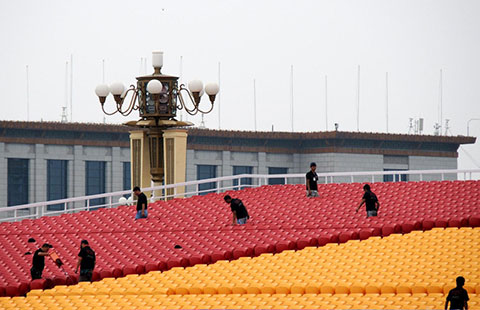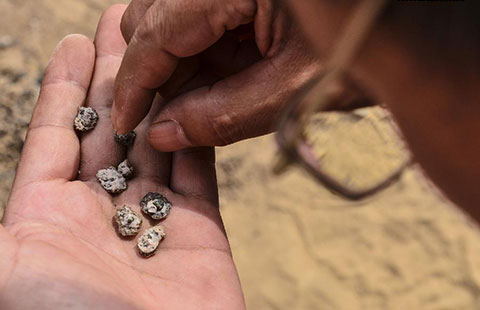

China overtaking EU as region's second-largest trade partner
China's economic ties with Latin America and the Caribbean need further development as the global economy weakens, the Chinese Academy of Social Sciences said in a "yellow book" on Tuesday.
Bilateral relations have moved beyond initial contacts based on trade to more complex interactions such as investment and financial cooperation, the government think tank said.
In just eight years, China's importance as a trade partner for Latin America has increased significantly, said Osvaldo Rosales, director of the international trade and integration division of the United Nations' Economic Commission for Latin America and the Caribbean.
"China is displacing the European Union as the second-largest trade partner of countries (in the region) and it's more important for South America's growth than the United States," he said.
In 2011, China's trade with Latin American and Caribbean countries exceeded $245 billion.
China has become the region's second-largest trade partner and third-largest investor, said Li Baorong, deputy director-general of the Latin America and Caribbean Department at the Foreign Ministry.
China will soon become South America's biggest trade partner, said Alicia Herrero, chief economist for emerging markets at Banco Bilbao Vizcaya Argentaria SA.
But trade between China and the region is concentrated on few countries and few products. Brazil, Chile and Argentina account for 77 percent of the region's exports to China, with copper exports taking up 30 percent and soy contributing 12 percent, Rosales said.
In each country, a handful of products account for 80 to 90 percent of exports to China, except for Brazil and Mexico.
"Trade with China is excessively of an inter-industrial nature, with Latin America exporting raw materials and importing manufactured goods," Rosales said.
Increased protectionism and a wave of nationalizations in the region could get in the way of improved bilateral economic relations, said Wu Guoping, assistant director of CASS' Institute of Latin American Studies.
Slowing economies on both sides will make progress more difficult. Wu predicted GDP growth in Latin America and the Caribbean will reach 3.8 percent in 2012, down from last year's 4.3 percent.
Liu Shijin, deputy director of the Development Research Center of the State Council, said China will see a 30-percent decline in its GDP growth rate from 2013 to 2017.
To minimize trade friction, countries in Latin America and the Caribbean should continue to move away from China's comparative advantage, and develop their own comparative advantages - not only in raw materials but also in other areas such as scientific knowledge, said Guillermo Perry, a former chief economist for the Latin America and Caribbean region at the World Bank.
Rosales said both sides could strengthen cooperation on the global agenda such as the international monetary system and international financial reform, policy coordination against any international economic crisis, and South-South cooperation to prevent financial contagion and preserve trade flows.
"South-South trade has become more significant within world trade in the wake of the crisis and could exceed North-North trade by 2017," Rosales said.
Financial cooperation is a promising new area, as both sides work through issues such as project lending and currency swaps, the "yellow book" noted.
Since 2005, China Development Bank Corp has agreed to lend nearly $60 billion to institutions in 13 Latin American countries, of which about $40 billion plus 20 billion yuan ($3.8 billion) has been extended for more than 60 cooperation projects in resource exploration and infrastructure construction.
During the China-Caribbean forum in September, China said it would provide Caribbean countries with $1 billion in concessional loans and $1 billion in special commercial loans to support infrastructure construction in the next three years.
wangxiaotian@chinadaily.com.cn







